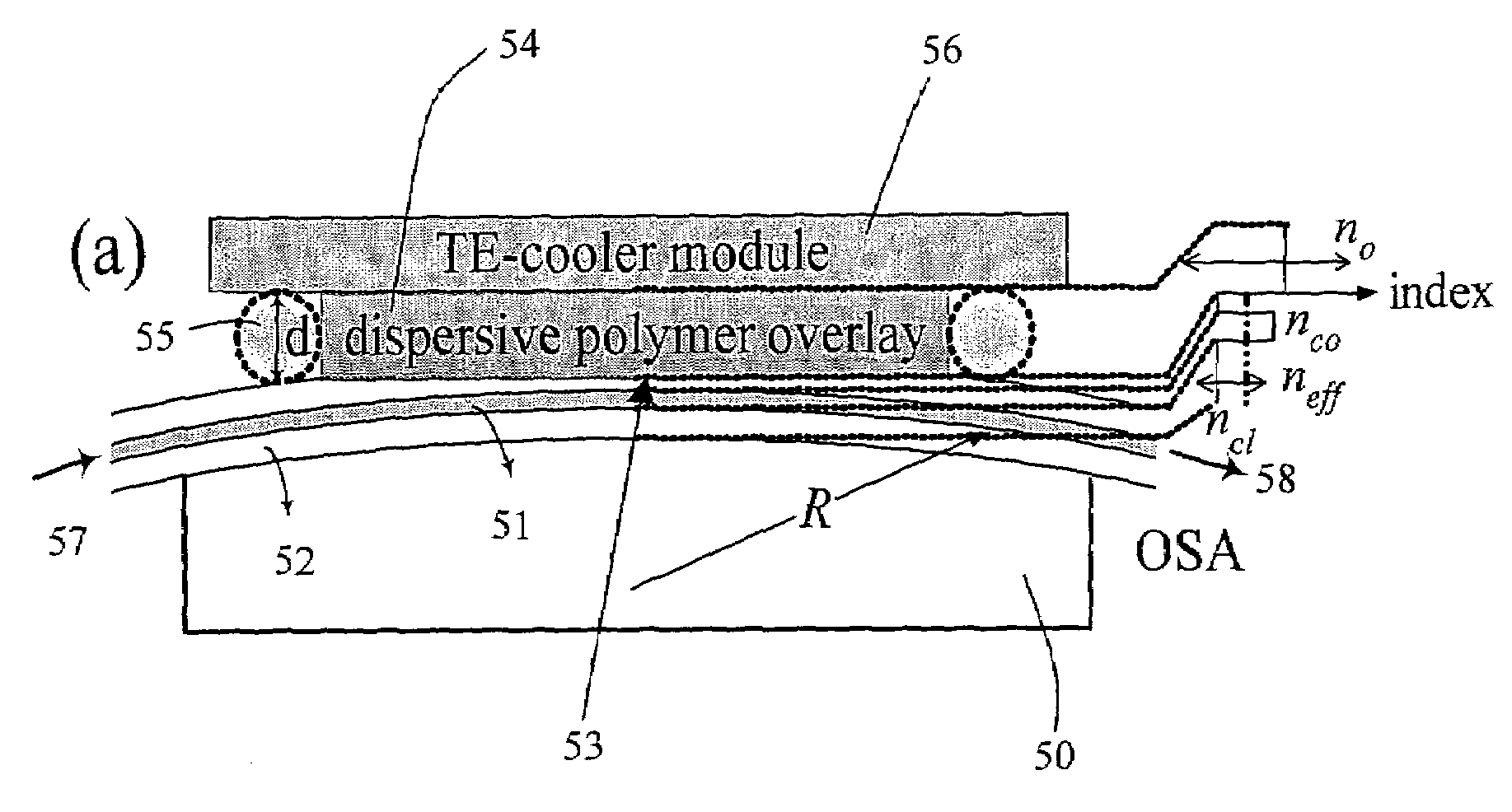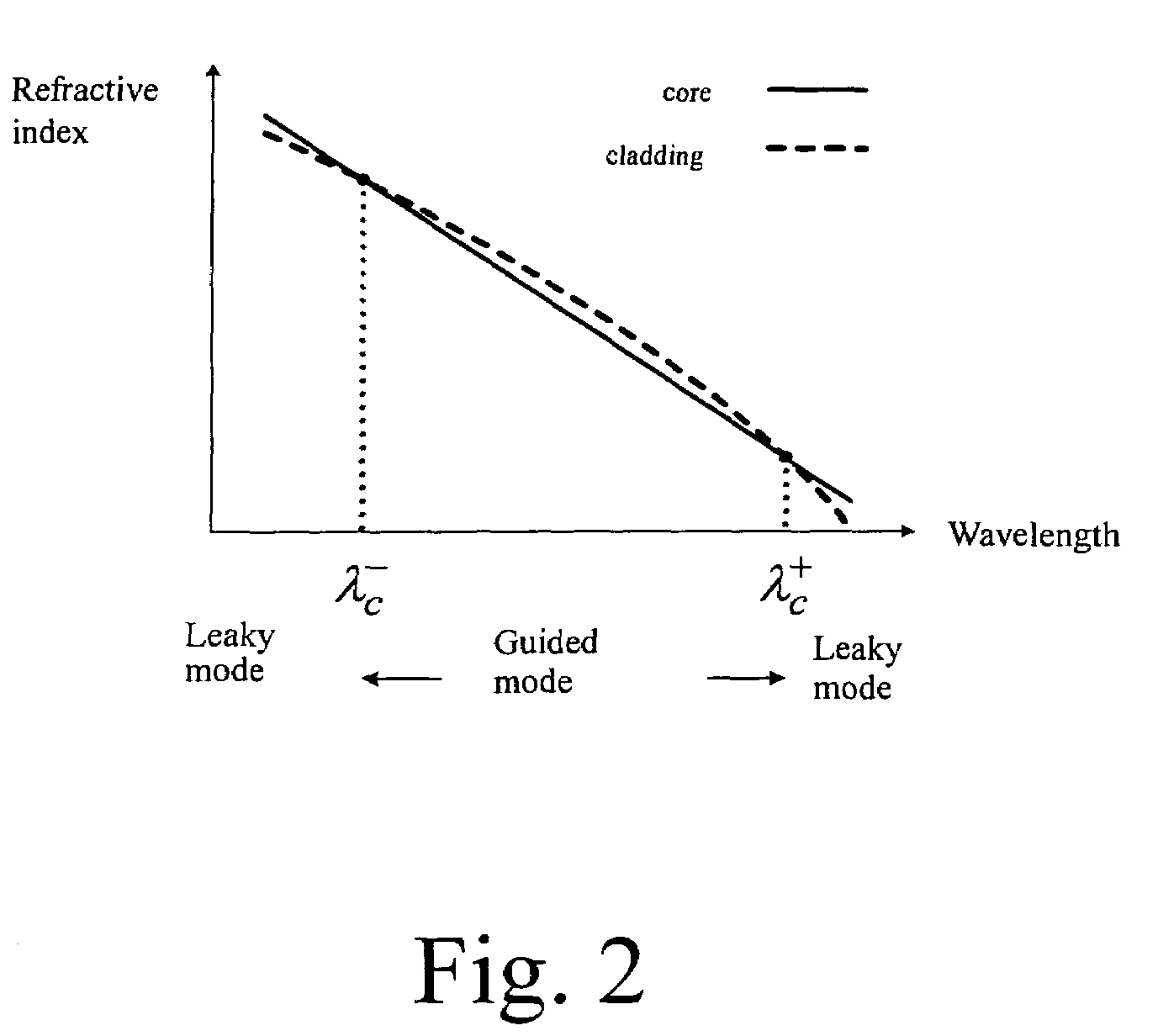Wide-band fiber-optic tunable filter
a wide-band fiber-optic tunable filter and wide-band technology, applied in the field of fiber-optic filters, can solve the problems of high optical loss, high cost, poor accuracy, need to be further improved, etc., and achieve high extinction ratio, low optic loss, and high sensitivity.
- Summary
- Abstract
- Description
- Claims
- Application Information
AI Technical Summary
Benefits of technology
Problems solved by technology
Method used
Image
Examples
Embodiment Construction
[0049]In the present invention, the theory of total internal refection (TIRF) is utilized. That is, the refractive index of a core of a fiber must be higher than that of a cladding of the fiber so that the signal light is able to be guided to propagate in the core. However, there are four situations with regard to the refractive indices of a core and a cladding of a fiber varying with the wavelength of the light, which are shown in FIG. 1 to FIG. 4, relating to the cases of a fiber-optic band-pass, a band-rejection, a short-pass and a long-pass filters respectively.
[0050]Instead of doping special constituents into the core and the cladding to fabricate dispersive fibers, the present invention takes steps therefor as follows. Please refer to FIG. 5. First, a normal fiber is arranged and fixed in a silicon V-groove 50 on a silicon substrate. The cladding 52 on the silicon substrate is then polished to show an evanescent-field 53. Different kinds of dispersive polymers 54 is positioned...
PUM
 Login to View More
Login to View More Abstract
Description
Claims
Application Information
 Login to View More
Login to View More - R&D
- Intellectual Property
- Life Sciences
- Materials
- Tech Scout
- Unparalleled Data Quality
- Higher Quality Content
- 60% Fewer Hallucinations
Browse by: Latest US Patents, China's latest patents, Technical Efficacy Thesaurus, Application Domain, Technology Topic, Popular Technical Reports.
© 2025 PatSnap. All rights reserved.Legal|Privacy policy|Modern Slavery Act Transparency Statement|Sitemap|About US| Contact US: help@patsnap.com



